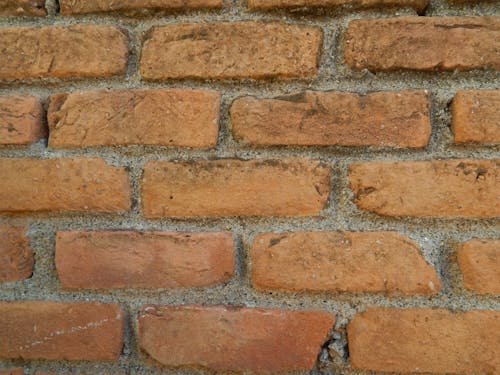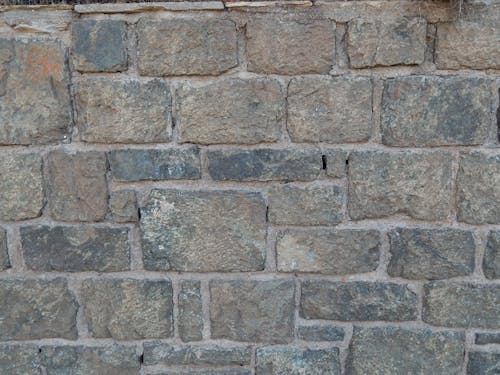How to Swing a Driver in Golf: A Step-by-Step Guide
The golf swing is one of the most important aspects of the game. It’s the foundation for every shot you take, and it’s what separates the good golfers from the bad. But it’s also one of the most difficult things to learn, and it can take years of practice to perfect.
In this article, I’m going to teach you how to swing a driver in golf. I’ll break down the swing into its basic components, and I’ll give you tips on how to improve your technique. By the end of this article, you’ll have a solid understanding of the golf swing, and you’ll be able to start hitting the ball further and straighter.
So if you’re ready to learn how to swing a driver like a pro, keep reading!
“`html
| Step | Description | Image |
|---|---|---|
| 1 | Stand with your feet shoulder-width apart and your knees slightly bent. Grip the club with your left hand (for right-handed golfers) just below the grip and your right hand just above it. |  |
| 2 | Take the club back along your swing plane, keeping your arms straight and your head down. |  |
| 3 | At the top of your swing, your arms should be extended and your club should be pointing at the sky. |  |
| 4 | Start to bring the club down through the ball, keeping your arms straight and your head down. |  |
| 5 | At impact, your club should be hitting the ball just below the center. |  |
| 6 | Follow through with your swing, keeping your arms straight and your head down. |  |
“`
How To Swing A Driver In Golf?
The driver is the longest club in your bag, and it’s used to hit the ball the farthest. It’s a powerful club, but it can also be difficult to hit consistently. If you want to improve your driver swing, you need to focus on three key areas: your grip, your stance, and your swing.
Grip
The grip is the foundation of your swing. If you don’t have a good grip, you’ll have trouble controlling the clubhead and making solid contact with the ball.
There are two main types of grips: the vardon grip and the interlocking grip. The vardon grip is the most common, and it’s what most golfers use. To grip the club in a vardon grip, place your left hand (for right-handed golfers) on the club so that your knuckles are facing down. Your right hand should be placed on top of your left hand, with your fingers interlocked.
The interlocking grip is another popular option. To grip the club in an interlocking grip, place your left hand (for right-handed golfers) on the club so that your knuckles are facing up. Your right hand should be placed on top of your left hand, with your pinkies interlocked.
Which grip you use is a personal preference. Experiment with both grips and see which one feels more comfortable and allows you to make solid contact with the ball.
Stance
Your stance is also important for a good driver swing. You want to have your feet shoulder-width apart, with your knees slightly bent. Your weight should be evenly distributed between your feet.
Your head should be up and your eyes should be focused on the ball. You don’t want to be leaning back or forward at address.
Swing
The swing is the final piece of the puzzle. A good driver swing starts with a smooth takeaway. You want to take the club back slowly and gradually, keeping your arms and body connected.
At the top of your swing, your arms should be extended and your club should be parallel to the ground. You should then start to bring the club down, keeping your arms and body connected. Your weight should shift to your front foot as you swing through the ball.
Finish your swing with your arms and body extended and your clubhead pointing at the target.
Here are some additional tips for a good driver swing:
- Keep your head down and your eyes on the ball.
- Swing your arms and body in a smooth, rhythmic motion.
- Don’t try to hit the ball too hard.
- Let the club do the work.
With a little practice, you’ll be able to hit your driver consistently and far.
The driver is a powerful club that can help you hit the ball a long way. But it’s also a difficult club to hit consistently. If you want to improve your driver swing, you need to focus on your grip, your stance, and your swing.
With a little practice, you’ll be able to hit your driver consistently and far.
3. Swing
The swing is the most important part of golf. It’s what generates power and accuracy, and it’s what separates good golfers from bad ones.
There are a few key things to remember when swinging a driver:
- Start with your feet shoulder-width apart and your knees slightly bent. Your weight should be evenly distributed on both feet.
- Grip the club with your left hand (for right-handed golfers) just below the grip. Your right hand should be placed on top of your left, with your thumbs together.
- Take the club back slowly and smoothly. Your arms should be relaxed and your shoulders should turn back.
- At the top of your swing, your arms should be extended and your club should be pointing at the sky. Your body should be turned 90 degrees to the target.
- Start to bring the club down by turning your body forward. Your arms should remain relaxed and your wrists should be hinged.
- At impact, your club should be hitting the ball just below the center. Your body should be facing the target and your weight should be on your front foot.
- Follow through by swinging your arms and body through to the finish. Your club should be pointing at the target and your body should be facing the target.
Here are some additional tips for swinging a driver:
- Keep your head down and your eyes on the ball. This will help you to make a smooth, consistent swing.
- Don’t swing too hard. A powerful swing is not always the best swing. A smooth, controlled swing is more likely to produce a good shot.
- Practice, practice, practice. The best way to improve your swing is to practice regularly. The more you practice, the better your swing will become.
How to start the swing
The first step in the swing is to start with your feet shoulder-width apart and your knees slightly bent. Your weight should be evenly distributed on both feet.
Grip the club with your left hand (for right-handed golfers) just below the grip. Your right hand should be placed on top of your left, with your thumbs together.
Take the club back slowly and smoothly. Your arms should be relaxed and your shoulders should turn back.
At the top of your swing, your arms should be extended and your club should be pointing at the sky. Your body should be turned 90 degrees to the target.
How to turn your body
As you start to bring the club down, your body should turn forward. Your arms should remain relaxed and your wrists should be hinged.
At impact, your club should be hitting the ball just below the center. Your body should be facing the target and your weight should be on your front foot.
Follow through by swinging your arms and body through to the finish. Your club should be pointing at the target and your body should be facing the target.
How to release the club
The release of the club is one of the most important parts of the swing. It’s what generates power and accuracy.
To release the club, simply let your arms swing through naturally. Don’t try to force it. The club will release itself at the right time.
As you release the club, your body should continue to turn through to the finish. Your club should be pointing at the target and your body should be facing the target.
4. Follow-through
The follow-through is the final part of the swing. It’s important to finish the swing with your arms and body extended. This will help you to generate power and accuracy.
As you finish the swing, your club should be pointing at the target and your body should be facing the target. Your weight should be on your front foot.
Hold the club in your follow-through for a few seconds to let the momentum of the swing die down. Then, slowly lower the club back to the ground.
How to finish the swing
To finish the swing, simply let your arms swing through naturally. Don’t try to force it. The club will release itself at the right time.
As you release the club, your body should continue to turn through to the finish. Your club should be pointing at the target and your body should be facing the target.
How to hold the club
The grip is one of the most important parts of the swing. It’s what connects you to the club and it’s what helps you to control the swing.
There are a few different ways to grip the club, but the most common grip is called the overlapping grip. To grip the club with an overlapping grip, place your left hand (for right-
How do I hold a driver?
The grip is one of the most important aspects of the golf swing, and it can have a big impact on your accuracy and distance. To hold a driver, place your left hand (for right-handed golfers) on the club so that your knuckles are facing up. Your right hand should be placed on top of your left, with your fingers slightly overlapping. Your grip should be firm, but not so tight that it interferes with your swing.
What is the correct swing path for a driver?
The ideal swing path for a driver is a slight draw, which means that the ball starts out slightly to the right of your target and curves back towards it. This swing path helps to generate more power and distance, and it also helps to keep the ball from slicing. To achieve a draw, start your backswing by turning your shoulders away from the target. Then, as you swing down, allow your arms to release and your clubhead to follow through.
How do I hit a driver off the tee?
Hitting a driver off the tee is a challenge for many golfers, but it’s important to remember that the goal is to hit the ball as far as you can without sacrificing accuracy. To do this, you need to take a few things into account. First, make sure you’re using the right tee height. A tee that’s too high will make it difficult to get under the ball, while a tee that’s too low will make it difficult to generate enough height. Second, take a slightly wider stance than you would for a shorter club. This will help you to stay stable during your swing. Third, swing your driver with a smooth, powerful motion. Don’t try to force the ball, and let your body turn through the impact zone.
What are some common mistakes golfers make when swinging a driver?
There are a number of common mistakes that golfers make when swinging a driver. Some of the most common include:
- Starting the swing with the arms. The backswing should be initiated by turning the shoulders, not the arms.
- Swinging too fast. A fast swing is often accompanied by a loss of control, which can lead to errant shots.
- Coming over the top. This is a common swing fault that causes the club to swing outside the target line on the downswing. It can lead to slices and hooks.
- Not releasing the club. At the end of the swing, the club should be released through impact and follow through. Holding on to the club can cause the clubhead to slow down and the ball to lose distance.
How can I improve my driver swing?
There are a number of things you can do to improve your driver swing. Some of the most effective methods include:
- Take lessons from a qualified instructor. An instructor can help you identify and correct any swing flaws you may have.
- Practice regularly. The more you practice, the better your swing will become.
- Videotape your swing. This can help you to see your swing from a different perspective and identify areas that need improvement.
- Use a launch monitor. A launch monitor can provide you with valuable data about your swing, such as clubhead speed, swing path, and launch angle. This data can help you to make adjustments to your swing and improve your results.
What are some tips for hitting a driver in windy conditions?
Windy conditions can make it difficult to hit a driver, but there are a few things you can do to improve your chances of success.
- Take a shorter swing. A shorter swing will help you to control the ball better in windy conditions.
- Swing slightly inside-out. This will help to keep the ball from drifting off to the right.
- Adjust your aim. Aim slightly left of your target to compensate for the wind.
- Use a more lofted club. A more lofted club will help you to get the ball up in the air and keep it from being blown back.
What are some tips for hitting a driver off the fairway?
Hitting a driver off the fairway is a little easier than hitting it off the tee, but there are still a few things you can do to improve your chances of success.
- Take a wider stance. This will help you to stay stable during your swing.
- Swing your driver with a slightly flatter trajectory. This will help you to avoid hitting the ball into the rough.
* **Follow through
there are a few key things to remember when swinging a driver in golf. First, make sure you have a proper grip on the club. Second, take your stance with your feet shoulder-width apart and your knees slightly bent. Third, swing the club back and forth in an arc, keeping your head down and your back straight. Finally, release the club at the end of your swing and follow through. By following these tips, you can improve your driver swing and hit the ball further and straighter.
Here are some key takeaways:
- A proper grip is essential for a good driver swing.
- Your stance should be wide and your knees should be slightly bent.
- Swing the club back and forth in an arc, keeping your head down and your back straight.
- Release the club at the end of your swing and follow through.
By following these tips, you can improve your driver swing and hit the ball further and straighter.
Author Profile

-
Hello, fellow golf enthusiasts! I’m Matthew Woods, the founder of GolfPGAChampionship.com.
My journey with golf is a story of passion, perseverance, and a little twist of fate. Growing up in the picturesque town of Charleston, South Carolina, I found myself captivated by golf, a fascination that was partly kindled by sharing a last name with the legendary Tiger Woods.
This platform is more than just a website; it’s a culmination of my life’s experiences in golf. Here, I share in-depth analyses of PGA championships, personal anecdotes from my golfing journey, and tips for golfers at all levels. My aim? To make golf accessible and enjoyable for everyone, from eager beginners to seasoned players.
GolfPGAChampionship.com is a testament to my belief that golf is not just a sport, but a journey filled with learning, challenges, and personal growth. I invite you to join me in this journey, to explore the beautiful game of golf through my eyes and experiences.
Welcome to GolfPGAChampionship.com – let’s make every swing count!
Latest entries
- January 11, 2024Golf BlogMay Wood Golf Club: A Golfer’s Paradise
- January 11, 2024How To GuidesHow to Lower Your Golf Handicap: A Step-by-Step Guide
- January 11, 2024Golf CoursesWhich US State Has the Most Golf Courses?
- January 11, 2024Golf Terms And DefinitionsWhat is a Forecaddie in Golf?
